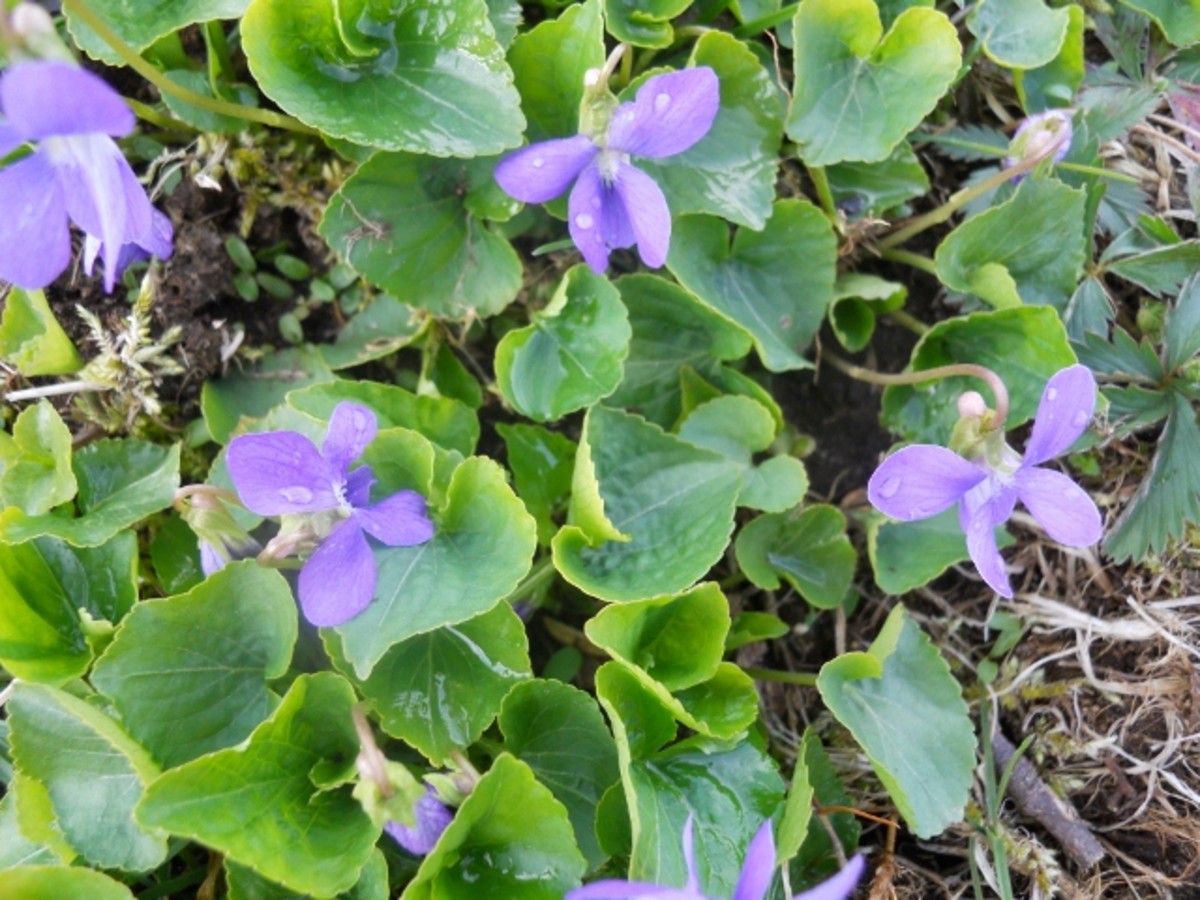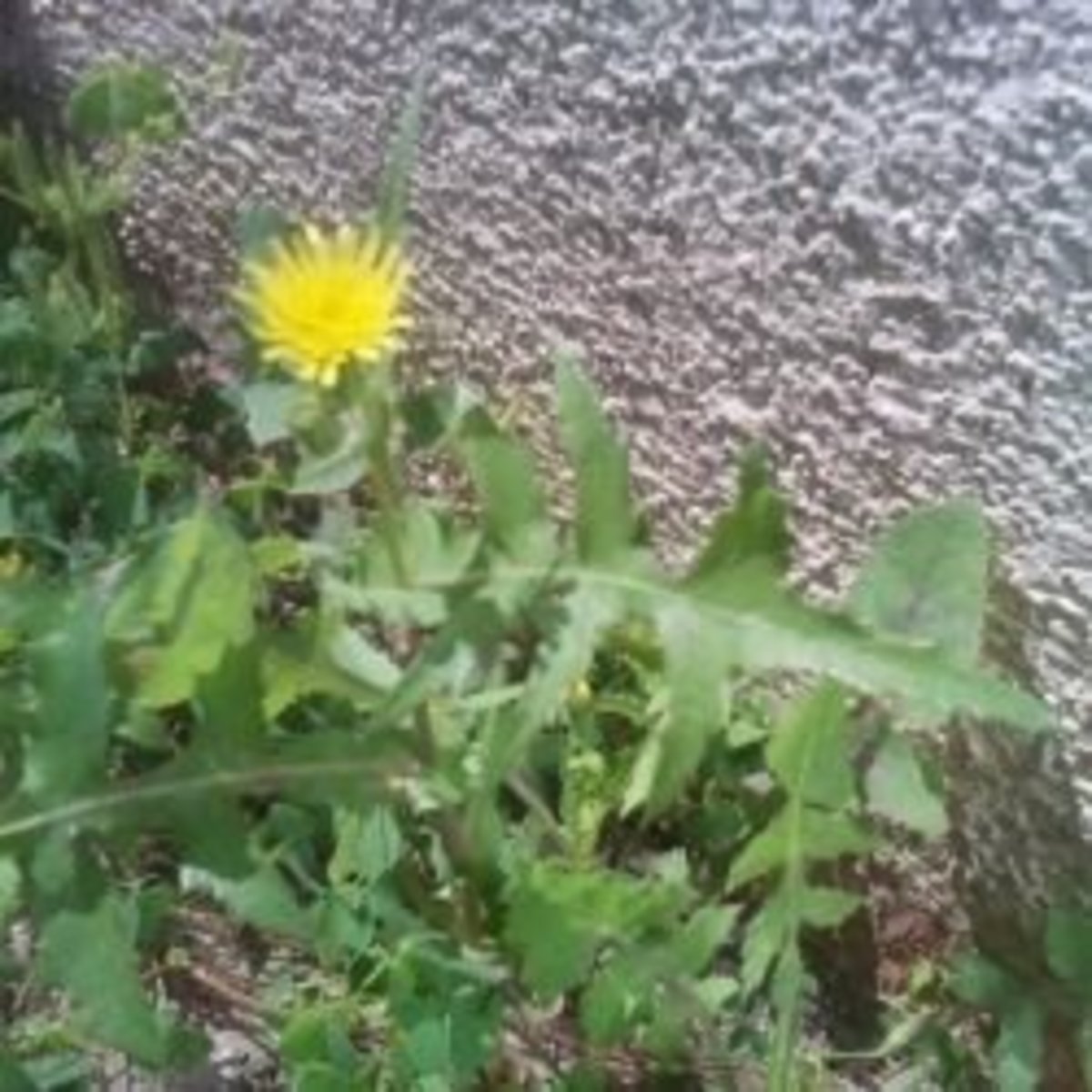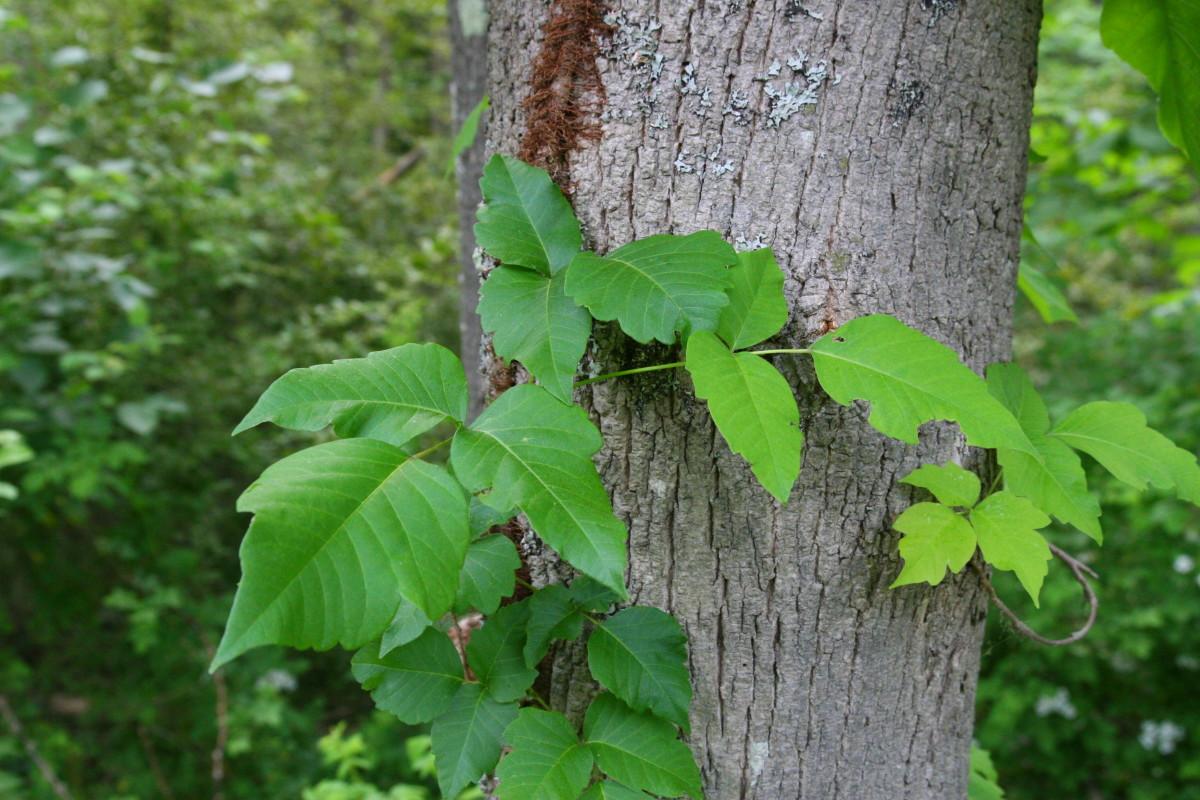All You Need To Know About Yucca Plants
Yucca Plants
Yucca is one genus of the subfamily Agavoideae with about 50 species of perennial evergreen shrubs and trees native to hot and dry areas of North, South, and Central America, and Caribbean. Yuccas have sword like leaves and produce huge panicles of white flowers. These plants are widely adapted to areas with various ecological and climatic conditions, including deserts, badlands, prairies, coastal sands, and arid to semiarid subtropical and semi-temperate areas.
Because of their popularity and their excellent adaptation to xeriscaping, many hybrid yuccas have been developed. Xeriscaping is a style of landscaping for areas low in rainfall which takes advantage of plants that naturally thrive on no or very little supplemental water. Yuccas make good landscape plants for dry regions such as the western United States and Canada since they thrive on very little water, need little care, almost never reproduce from seed, provide an interesting floral display, and provide texture to the landscape all year around, even in locations which freeze.
Yucca Plant:
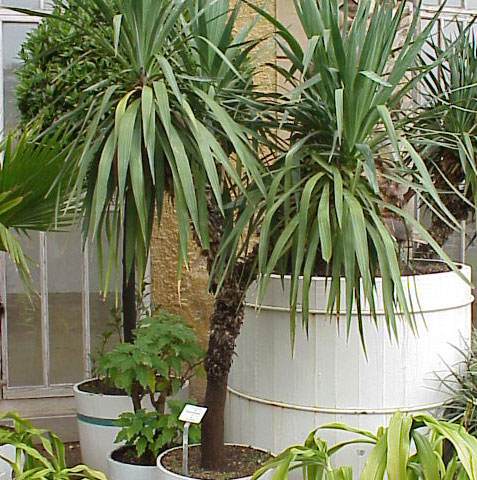
Yucca Plants
My Related Hubs
Growing Yucca
Many yuccas do not bloom every year, somewhat like some cacti. Conditions must be correct to promote bloom, including rainfall. Yuccas are dependent on a particular species of night flying moth for pollination. The same moth lays its eggs in the flowers, and its larvae eat some of the seeds. A few species of yucca only bloom once, and then die.
Native Americans used some parts of some of the species of yucca for food, including the seeds and fruits. Roots of the some yucca varieties yield saponins, which were used as shampoo. Dried leaves and fibers were used to start fires with friction. Some species were used for their sharp spines as sewing needles, or to puncture meat to hold it while it cured. Yuccas are still used for basket weaving, dyes, and medicinal uses.
Since yuccas are so widely adopted, there is a variety that will do well in most areas where it does not get below 30°F or -34°C. Some varieties are adapted to rocky sands, including along the seashore while some are adapted to poor draining clay soil. Most thrive in full sun, but some will tolerate some shade. Most are adapted to high heat without humidity, but there are some varieties which will do well in humid climates. A few yucca varieties are adapted to much wetter conditions, such as the Southeast United States.
Some varieties of yucca grow into large trees which somewhat resemble palm trees, but most varieties stay smaller and may or may not develop a stem. Some yucca varieties are a typical bright green, while there are variegated and reddish varieties, as well as silvery or blue-green leaved varieties. Some have leaves which are very stiff and pointy, while others have soft, droopy leaves.
Even the soft, droopy leaved yuccas have sharp edges and sharp, needle like ends, so yuccas do not make a good entryway plant. The sharp parts can penetrate even thick clothing, so yuccas are best planted where children and pets do not play. Yuccas make good security features, such as under windows or as a privacy fence.
Yucca can be propagated by layering, or by root divisions. Some can also be started by seed.
Yucca Blooms
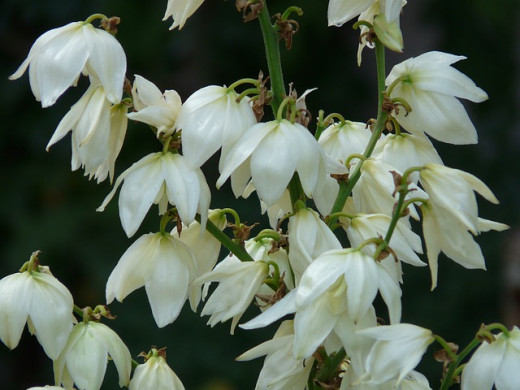
Yucca
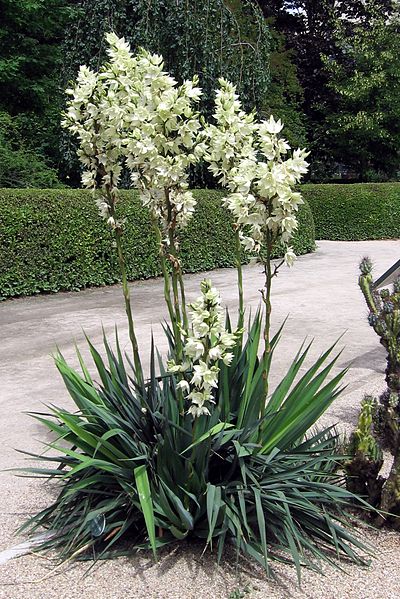
Types of Yucca
- Yucca brevifolia, or Joshua tree is native to the Mojave Desert area of the Southwestern United States. The Native American Cahuilla peoples used it to weave baskets and sandals, and ate its seeds and flower buds. Joshua trees are protected by laws in some states, and they do not do well outside of the native area. The Joshua tree grows as tall as 45 feet and can survive for hundreds or even thousands of years because of its deep, wide root system. It has two subspecies, the Jaeger Joshua tree (Y. brevifolia ssp. jaegeriana) and Webber's Yucca (Y. brevifolia ssp. herbertii) which is also called the Herbert Joshua Tree.
- Spanish bayonet (Yucca aloifolia) is native to the coastal areas and shorelines of the southeastern United States, Mexico, and the West Indies. It is widely cultivated and offered in several different cultivars. It grows to 5 to 20 feet tall before its tumbles over and roots to form new plants. It is hardy in USDA zones 8 to 11.
- Yucca baccata (banana yucca or datil yucca) is native to Southwestern US deserts and Mexico. Native American Paiutes peoples dried its fruit to eat during the winter. The banana yucca does not form a trunk and stays relatively small.
- Yucca elata (soaptree yucca) is native to the deserts of the Southwestern United States. It grows to 14 feet tall and sends up tall, dramatic blooms some years. Native Americans used the soaptree's fiber to make cloth, belts, baskets, mats, dental floss and cords. Its roots were used for soap and shampoo, and it is still used for hairloss and dandruff. Ranchers have used it as emergency food for their livestock during drought.
- Yucca filamentosa, Adam's needle, is hardy yucca species native to eastern North America. It is used a as a medicinal plant, and various parts of the plant are used to stun fish. Adam's needle blooms at night. Cultivars include Bright Edge, Golden Sword, Ivory Tower, and Color Guard.
- Yucca glauca, or plains yucca, is native to central North America. It was traditionally used by many Native American peoples, including the Blackfoot, Cheyenne, and Lakota for its medicinal qualities.
- Yucca gloriosa, or Spanish Dagger, is native to the coastlines and islands of the southeastern US. It is widely cultivated in many parts of the world, and has many cultivars which display varying forms. It can grow to over 16 feet tall and is hardy to -5°F.
- Yucca guatemalensis, or spineless yucca, is native to Central America. This species tolerates many soil types and can be used a houseplant. It has many cultivars, including some variegated forms. Its bitter flowers are sometimes used in recipes and coffee estates plant these yuccas to prevent soil erosion. This variety can grow up to 27 feet tall, but usually stays less than 18 feet tall.
- Yucca pallida, or pale yucca is native to Mexico and the southern US. It has pale blue gray leaves and grows to 7 1/2 feet tall when in bloom. It is not yet commonly cultivated, but its small size and cold hardiness to 0°F make it a good candidate.
- Yucca recurvifolia, or pendulous yucca, is native to the southeastern US. It grows to 6 feet in height. Its trunks often grow horizontally on the ground, rooting and sending up new branches where it touches the ground. It is used in landscaping for its tropical effect, and will tolerate light shade.
- Yucca rostrata, or beaked yucca, is native to the southern US and northern Mexico, and conserves water much like a cactus. It grows to 15 feet tall and one cultivar, Sapphire Skies has dramatic, powder blue foliage.
- Yucca schidigera, or Mojave yucca, is native to the deserts of the southwestern US. It has a variety of medicinal uses and the Native Americans used it to make sandals, cloth,and ropes. It is a 15 foot tall tree.
- Yucca schottii, or Mountain Yucca is native to the desert mountain ranges of the southwestern US and Mexico. Its seeds were used by Native Americans for food. It grows to 6 to 20 feet tall.
- Yucca torreyi, or Torrey Yucca, is native to the deserts of Mexico and to Texas. It grows to 18 feet and is hardy to 10°F.
Lord's Candle
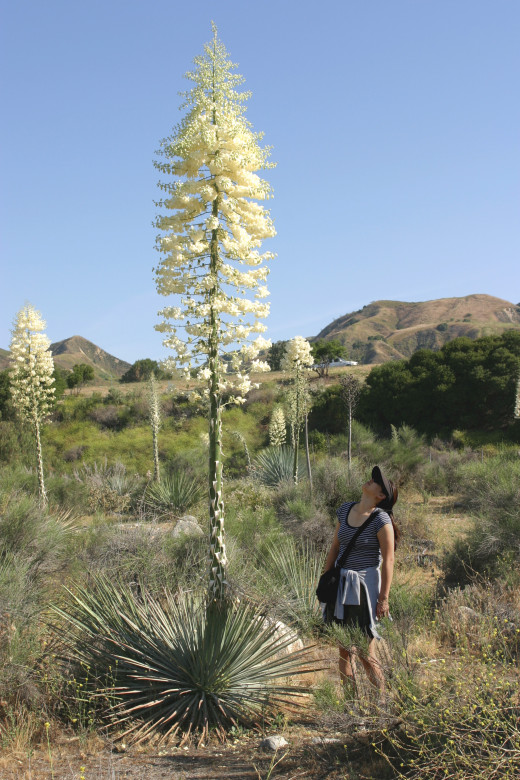
Yucca Plant Relatives
Yucca plants are sometimes confused with agave since they thrive in the same conditions, are in the same family, and look very similar except when they are in bloom. The classification of the Agavoideae family has been redefined several time, so references before 2009 may have varieties classified differently.
Yucca is also commonly confused with cassava(Manithot esculenta), which is of the spurge family. Cassava is also called yuca, manioc, and tapioca, and it cultivated for its starchy root tubers in South America. It is a major staple food for a half billion people. (1)
- Hesperaloe parviflora, or Red yucca, is native to Texas and northern Mexico, and is also a member of the Agavaceae family. This popular landscape plant forms 4 foot mounds of succulent leaves. It is hardy to 12°F, and is used in medians and roadsides or as an accent plant. Its tall pink or yellow flowers bloom in early summer through autumn and attract hummingbirds.
- Hesperoyucca whipplei, or Lord's candle, was at one time classified as a yucca. It is now controversially classified as the genus Hesperoyucca. It was used by Native Americans for food, clothing, sandals, and ropes, and its roots were used as soap and shampoo. It is native to the southern US and northern Mexico. It is also called Yucca whipplei, (chaparral yucca, Spanish bayonet, or Quixote yucca. It takes 5 or more years to bloom a tall, gigantic flower many times its size, after which it often dies. It has normally produced some clones around its base which then reproduce. It has been cultivated in other parts of the world, and does well in clay soil.
When purchasing a yucca plant, the botanical name in Latin should always be included. You do not want to realize in a few years that you have planted a yucca that is going to get far larger than you have planned. A little research is also in order, since even the Latin names sometimes get changed due to new DNA testing or other reasons to change classifications.
(1) http://en.wikipedia.org/wiki/Cassava, Nov. W5, 2011.
You Are Welcome To Visit : Growing Vegetables In Pots

